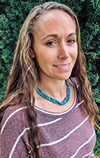Fall is approaching, and at this point in the year producers will start readying for bringing herds home, weaning, shipping and gearing up for winter feeding. All the hard work and frustration with haying equipment breakdowns will soon be realized with trucks running the roads to deliver hay. If not already completed, sellers and buyers alike should consider accomplishing the task of testing their hay, allowing managers to ensure nutritional needs of their cattle can be met one way or another.
Accomplishing collection of a hay sample is fairly straightforward. Hay probes are the most appropriate tool to utilize when collecting a sample, whether the type is push, hand drill or electric drill. The core length should allow for a sample of 12 to 24 inches to be collected as well as encompassing a proper leaf-to-stem ratio. Sampling should be done at random on a stack or lot of hay, with additional sampling being done for each different stack or lot. The National Forage Testing Association recommends taking up to 20 cores (one core per bale) per sampling to ensure creation of a composite sample and account for the amount of forage quality variation that will occur throughout a field. Core samples then need to be placed into a sealable bag for shipping. Hay probes for taking core samples can range in cost from $125 to over $300. Purchasing this tool may not be necessary for all operations, so consider contacting your local extension services office, as many have this tool available for use.
When determining what testing needs to be performed on your hay samples, consider guidance from a consulting nutritionist, your veterinarian or extension agent to select the right test for your operation’s needs. Test options could include near-infrared spectroscopy (NIR) analysis, wet chemistry and testing for molds and mycotoxins. NIR tests implement software recognition of individual nutrients within a feed sample based on the amount of light absorbed with each infrared wavelength, resulting in a quick turnaround of the results back to the producer. Wet chemistry utilizes chemicals to dissolve or isolate individual nutrients, providing very accurate values but at a slower turnaround time and typically for higher cost.
Regardless of the tests a producer chooses, understanding the results will be vital to confirming nutritional management. Crude protein (CP) may be lacking for late-gestation cows, acid detergent fiber (ADF) may be too high and less digestible for the animal, or perhaps you need to know what mineral is lacking to determine supplementation amounts. Again, consider consulting with a nutritionist, veterinarian or extension agent to confirm understanding of the results and move forward confidently with winter feeding needs.










